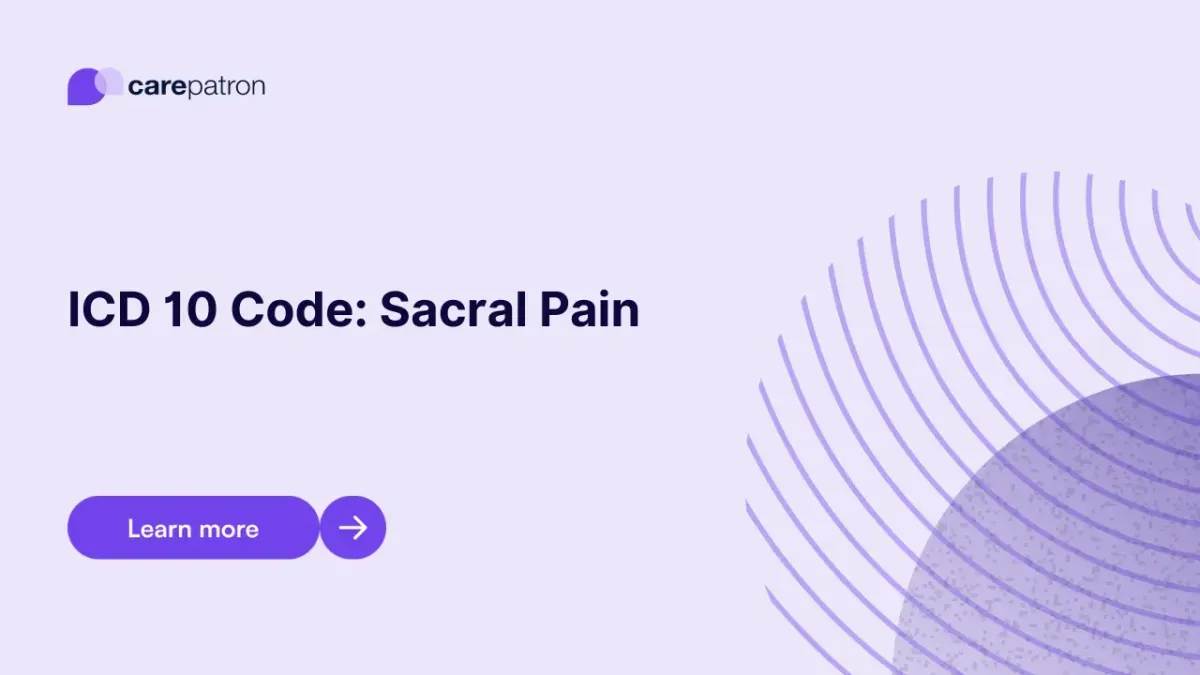
Sacral Pain ICD-10-CM Codes
Learn about the ICD-10-CM codes for sacral pain you can use through this guide.
Use Code
Commonly asked questions
Sacral pain can result from trauma, musculoskeletal issues, nerve compression, infections, or underlying medical conditions like sacroiliac joint dysfunction.
Diagnosis typically involves a physical examination, imaging studies (X-rays, MRI, CT scans), and sometimes nerve conduction tests to identify the underlying cause.
Treatment options may include physical therapy, pain medications, corticosteroid injections, lifestyle modifications, and, in severe cases, surgical interventions to address the underlying cause of the pain.
EHR and practice management software
Get started for free
*No credit card required
Free
$0/usd
Unlimited clients
Telehealth
1GB of storage
Client portal text
Automated billing and online payments
